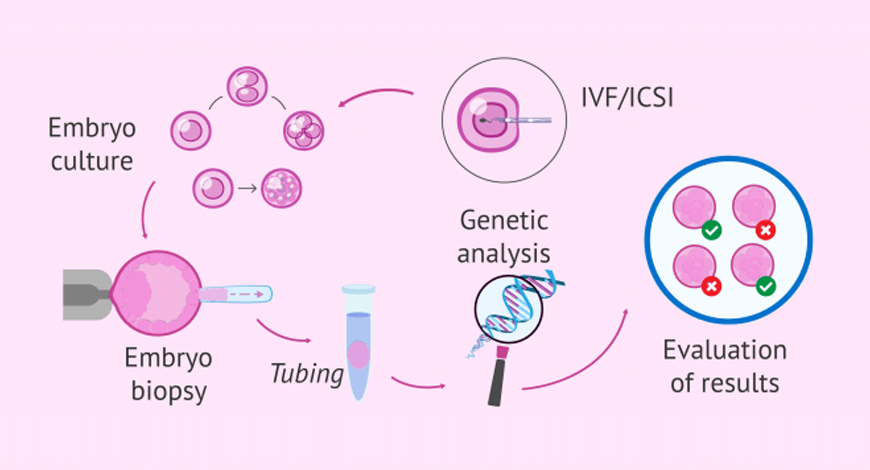
Preimplantation genetic testing is a technique used to identify genetic defects in embryos created through in vitro fertilization (IVF) before pregnancy. Preimplantation genetic diagnosis (PGD) refers specifically to when one or both genetic parents has a known genetic abnormality and testing is performed on an embryo to determine if it also carries a genetic abnormality. In contrast, preimplantation genetic screening (PGS) refers to techniques where embryos from presumed chromosomally normal genetic parents are screened for aneuploidy.
Because only unaffected embryos are transferred to the uterus for implantation, preimplantation genetic testing provides an alternative to current postconception diagnostic procedures (ie, amniocentesis or chorionic villus sampling), which are frequently followed by the difficult decision of pregnancy termination if results are unfavorable. PGD and PGS are presently the only options available for avoiding a high risk of having a child affected with a genetic disease prior to implantation.
